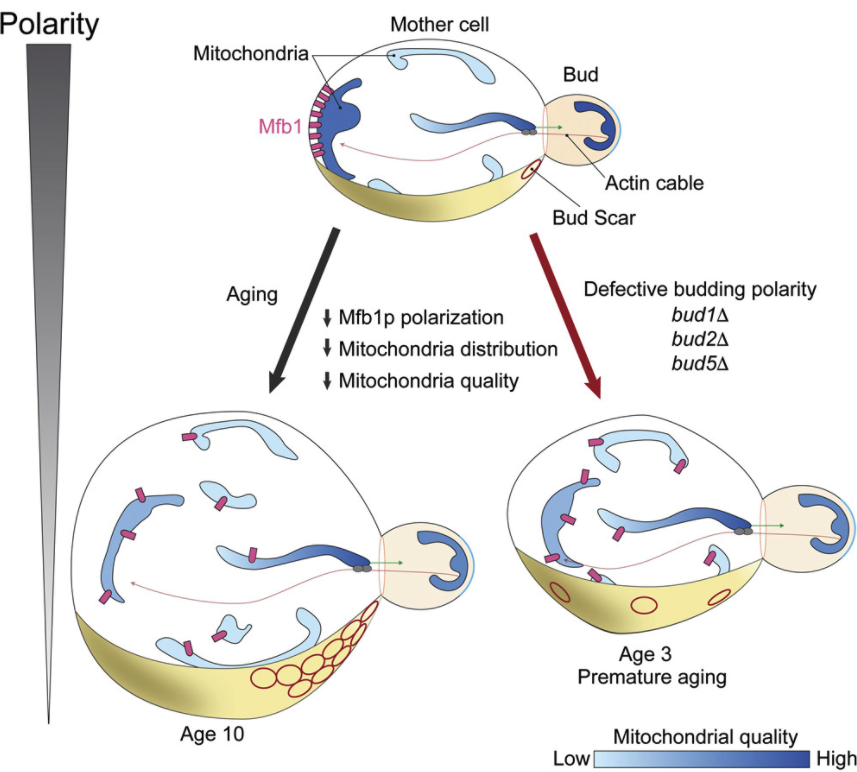In a recent post, we discussed asymmetry in pH between mother and daughter cells. Here we’re continuing the theme of mother/daughter inheritance patterns with a study of asymmetrical mitochondrial inheritance. The underlying hope is to garner clues about aging and lifespan, since mother cells have reduced lifespan relative to their daughters.
Yeast cells are normally symmetrical, i.e., round. One of the first steps during cell growth is the breaking of symmetry to create poles, where one pole will become the bud tip and the other pole will become the mother cell tip. In a recent paper in iScience, Yang et al. describe how the mother cell tip is normally distal to the bud tip and that higher-functioning mitochondria localize to both poles. The mitochondrial F box protein Mfb1p was shown to be key for tethering mitochondria at the mother cell tip, which prevents every higher-functioning mitochondria from going to the bud. Mfb1p remains associated with the mother cell tip throughout the entire cycle, and is the only protein known to do this.
Interestingly, Mfb1p is itself asymmetrically localized, where it associates with mitochondria in the mother cell but remains excluded from the daughter cell until just before cytokinesis.
To assess the link between aging and polarity, the authors labeled bud scars with dyes that distinguished between new and old scars. In highly polarized cells, new scars will form directly next to one another. They found polarized bud site selection in >97% of young cells, which was quickly reduced to 89% after 6-10 divisions and plateaued at ~70% for the oldest cells. Thus, aging as a factor of polarity was detectable early in lifespan and continued to decline to a fixed level. Likewise, the polarized localization of Mfb1p to mother cell tips also declined with age, where young cells showed Mfb1p tethered to mitochondria almost exclusively at the mother cell tips, but over time the localization dispersed throughout the mother cell. Interestingly, deletion of RSR1/BUD1 (required for polarized bud site selection) disrupted this polarized localization of Mfb1p within the mother, yet didn’t cause Mfb1p to go to the bud (i.e., cause loss of asymmetry). Thus, polarization and asymmetry could be separated in the bud1Δ mutant cells—and these cells also showed reduced lifespan. The same was seen in bud2Δ and bud5Δ cells.
Given that both bud1Δ and mfb1Δ cells had reduced lifespan, the authors asked whether the two mutations affected lifespan in the same way by examining the double mutant for additive effects. Seeing no additive effects, they concluded that BUD1 and MFB1 operate in the same pathway for controlling mitochondrial distribution and the associated effects on aging.
Yang et al. show that mitochondrial localization and inheritance patterns have a clear relationship with replicative lifespan. The secrets of aging continue to invite study, and future results should be equally intriguing.
